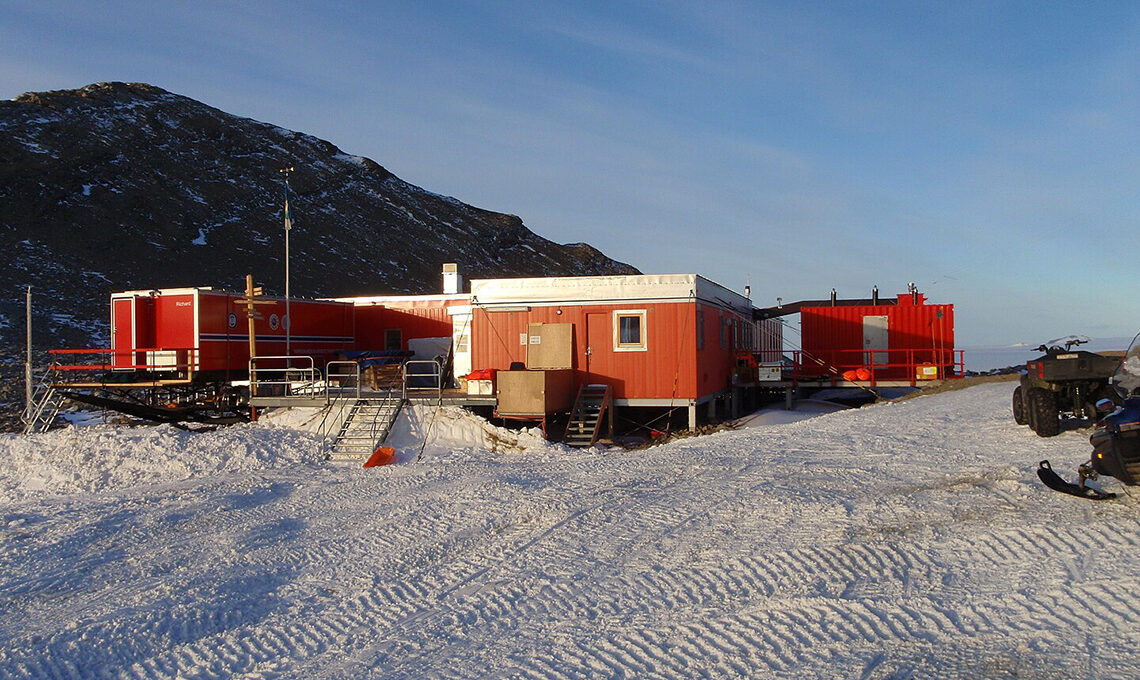
A campus network for Antarctic research
Setting up Campus Network as a Service (CNaaS) is a frequent assignment for the technical staff of Sikt, the national research and education network (NREN) of Norway. Still, it was far from just another day at the office for network engineer Henning Løvmo as the Norwegian Polar Institute requested assistance. During three weeks in early 2024, he installed a campus network for the institute’s Troll research station at Antarctica.
Troll is the starting point for biological, glaciological, and geological field work during the summer season, and is a full-year base for continuous monitoring in a range of disciplines including meteorology, environment, and seismology.
Being assigned for a trip to the research station was a dream come true, admits Henning Løvmo:
“Living at a nunatak (a mountain in the middle of a glacier, ed.), at an altitude of 1,300 meters above sea level, and surrounded by ice with more than 1,000 meters in thickness is not exactly an everyday experience!”
“Unforeseen things will happen”
The research station did have a satellite connection already, but with growing demands for bandwidth in many scientific disciplines an upgrade was due. Further, the Sikt engineer took advantage of the recently established commercial Starlink satellite system to provide redundancy for the new campus network at Troll.
The assignment had a tight deadline since the airstrip near Troll is only open for a few months during the Antarctic summer from October till February.
Adding to the challenge was the fact that Henning Løvmo had to bring all equipment with him, since the possibility of ordering a delivery by currier does not exist:
“We had to push ourselves to the limit to meet the deadline for getting the equipment ready in time.”
While still in Norway, his mind was already in Antarctica trying to imagine what could go wrong:
“I was just hoping there wouldn’t be too many curve balls, but for an installation of this kind you shouldn’t be surprised if unforeseen things happen.”
Petrels fly far for their meals
Troll is located 235 km from the coast at Jutulsessen in Dronning Maud Land, a central area for Norwegian research in Antarctica. The station is manned all the year round. It can accommodate six people in the Antarctic winter and many more in the summer.
Visiting researchers study several rare animal species. For instance, the nearby nunatak Svarthamaren is home to the world’s largest colony of Antarctic petrels. Petrels live on krill in the marine environment, several hundred kilometers away. In recent times, the petrel population has declined sharply.
Other important tasks for the researchers are meteorological studies, radiation level monitoring, cloud cover measurements, atmospheric and seismic surveys, and obviously glaciology.
For Henning Løvmo, the stay at Troll is a lifetime experience:
“I am pleased to have a great answer when I am asked to come up with a fun fact about myself!”
The text is based on an online interview by Anne-Maren Karlberg, Sikt, with Henning Løvmo during his stay at the Troll station.
Featured image: Troll Research Station Antarctica. Photo credit: Islarsh – Own work, CC BY-SA 3.0
For more information please contact our contributor(s):

